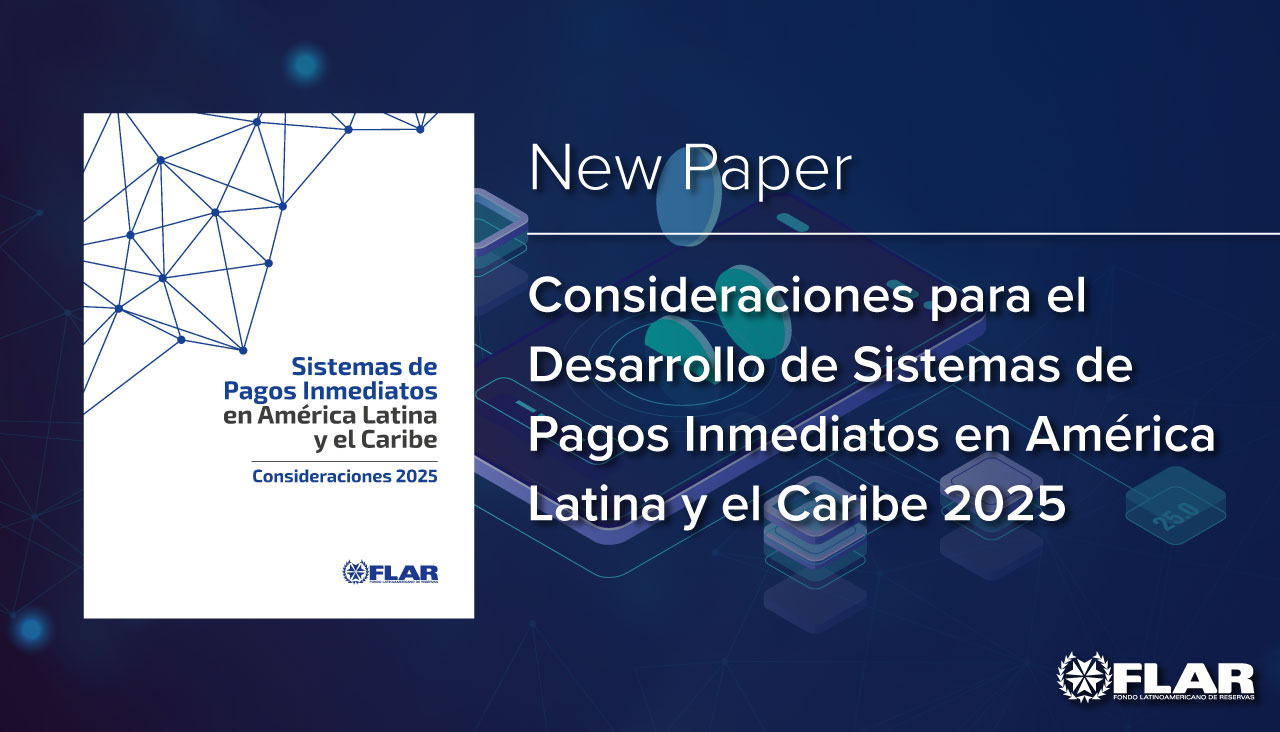El pasado 23 de diciembre de 2025, el FLAR realizó el desembolso de un crédito de apoyo a la balanza de pagos de Ecuador por USD 500 millones, aprobado por su Directorio en la reunión ordinaria CXIV.

This sub content title section you can add you real content.

El pasado 23 de diciembre de 2025, el FLAR realizó el desembolso de un crédito de apoyo a la balanza de pagos de Ecuador por USD 500 millones, aprobado por su Directorio en la reunión ordinaria CXIV.

The study finds that increases in public debt tend to reduce bank capital, but the size and timing of the adjustment depend on institutional quality. In strong regulatory systems the impact is immediate and later reverses, while in weaker environments the adjustment is slower.

The study shows that although bank capital ratios in emerging economies were procyclical before 2014, over the past decade they have become less cyclical or even countercyclical. Banks with larger capital buffers respond better during downturns, and regions such as Latin America, developing Asia, and the Middle East show the greatest improvements, reflecting the growing influence of macroprudential regulation.

The study shows that in Latin America, between 2002 and 2023, increases in government spending—especially during the pandemic—raised inflation, with stronger effects in countries with lower fiscal credibility and shorter-maturity debt. Unlike in OECD economies, this inflationary impact persists outside the COVID-19 period, highlighting structural vulnerabilities in the region.

The post-pandemic resurgence of inflation has renewed attention on inflation persistence and the role of central banks in maintaining credibility. While conventional explanations emphasize fiscal discipline, exchange rate regimes, or inflation targeting, these factors do not fully explain why some countries return rapidly to price stability while others experience prolonged inflationary episodes.

The rise of digitalization has transformed financial systems through the adoption of instant payment systems (IPS), which enable real-time fund transfers and promote efficiency and financial inclusion. In Latin America and the Caribbean, the development of these systems varies across countries due to regulatory and technological challenges. To strengthen them, FLAR promotes cooperation among central banks and has developed a regional technical guide outlining key challenges, opportunities, and strategic guidelines to foster greater interoperability and financial integration in the region.

The post-pandemic resurgence of inflation has renewed attention on its persistence and the role of central banks in maintaining credibility. Conventional explanations emphasize fiscal discipline, exchange rate regimes, or inflation targeting. However, these factors do not fully explain why some countries return rapidly to price stability while others experience prolonged inflationary episodes. We argue that central bank transparency—the clarity of communication regarding objectives, policy decisions, and macroeconomic forecasts—is a key determinant of inflation persistence.

The determinants of the price-to-income (PTI) ratio in urban real estate markets have been extensively examined in the literature (e.g., Himmelberg et al., 2005; Duprey & Klaus, 2022; Kuebler & Rugh, 2013; André et al., 2014; Pavlidis et al., 2016; Wu et al., 2012). Most studies focus on issues related to credit conditions and systemic risk, treating the PTI ratio primarily as a measure of housing affordability.

(Washington, DC) – On 14 October 2025, the Regional Financing Arrangements (RFAs) and the International Monetary Fund (IMF) marked a significant milestone with the convening of their 10th Annual High-Level Dialogue. Over the past decade, cooperation between the RFAs and the IMF has deepened institutional ties, fostering stronger coordination between these two layers of the Global Financial Safety Net (GFSN).

Understanding the cyclical movements of macro-financial variables, such as credit, is relevant not only to identify whether the financial sector is experiencing overheating, but also to design macroprudential measures aimed at preventing extreme fluctuations in the financial cycle. In this study, we focus on measuring the cyclical changes of different credit indicators—both in logarithmic terms and as ratios to GDP—as well as by type of credit and currency.